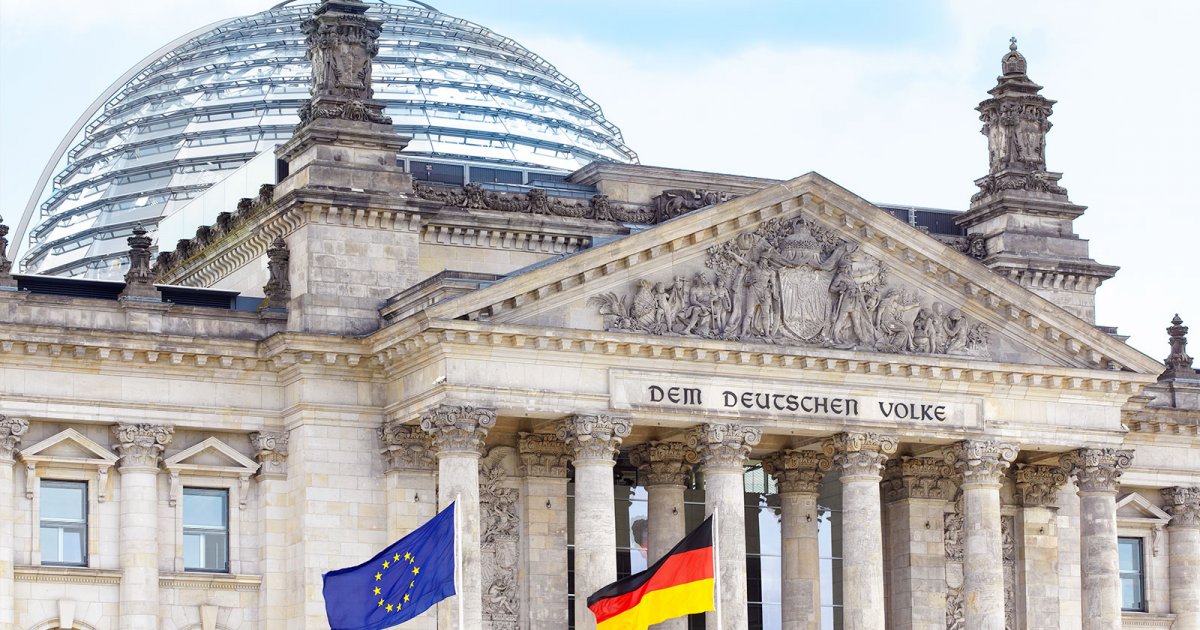REICHSTAG, Facade Cupola
 Language: English / USA
Language: English / USA
The outside walls of the Reichstag were left untouched by the restoration work carried out in the 1990s by Norman Foster, and still convey the impression of the seat of an imperial power. The Neoclassical facade, with the six-column portico and the steps leading up to the entrance resemble a temple from Ancient Greece, topped with a triangular element.
If you look at the stone frieze that runs along the top of the columns, you’ll notice a dedication that reads: Dem Deutschen Volke, to the German people. It was added to the facade in 1916 on a design by the German architect Peter Behrens, on the orders of the emperor, to ingratiate himself to the German people – who in fact forced him to abdicate just two years later. The bronze letters were created by melting down two French cannons seized during the wars against Napoleon.
On the sides of the facade, you’ll notice the extreme architectural rigor that distinguish the building. Two rows of windows run one above the other, and are perfectly symmetrical. The base of the whole edifice is composed of large stones arranged in perfectly even rows.
The marvelous glass dome, designed by Norman Foster to replace the previous one that was destroyed during the fire in 1933, resembles a large beehive. It is located on top of the Parliament Chamber, and the decision to use glass is significant. As well as allowing light in, the glass symbolizes transparency, a principle that should always have an important role in politics.
It is possible to visit the dome. An elevator leads up to the roof terrace, where you can enjoy splendid views of Berlin. Inside the dome, two spiraling ramps take visitors on a route that winds its way around the circumference, offering the chance to look out over the city on one side and over the center of German political life on the other.
An interesting fact: one of the conditions established for the recent restructuring work was that it had to respect the original building, so if you look closely, you’ll notice there is still some graffiti in Russian, in Cyrillic letters, written by the soldiers of the Red Army against the Nazis, after they conquered the city in 1945.
Our visit to the Reichstag ends here. MyWoWo would like to thank you - see you again at another Wonder of the World!



